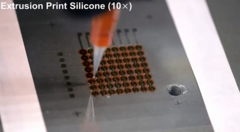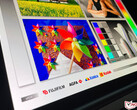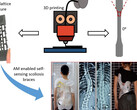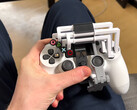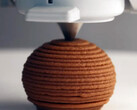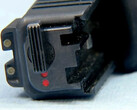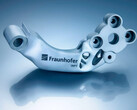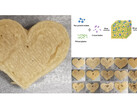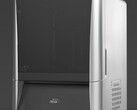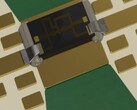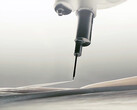A research group of scientists at the University of Minnesota Twin Cities has succeeded in 3D-printing the entirety of a flexible organic light-emitting diode (OLED) display for the first time. OLED screens are currently the most expensive phone and laptop component, especially the modern flexible ones that are made with the frugal LTPO technology that allows for high refresh rates, or the ones employed in foldable phones like Samsung's Galaxy Z Fold 3. If there is a way to produce them cheaper, the price of this component will go down further, allowing manufacturers to focus on technological advancements in other important areas like cameras, for instance.
The University of Minnesota Twin Cities researchers used a combination of methods to create the world's first entirely 3D-printed flexible OLED panel. They spray-printed the active light-emitting layer components at room temperature, while using the same 3D printer to extrude the "electrodes, interconnects, insulation, and encapsulation." In the end, they arrived at a bendy 1.5" OLED display with 64 total pixels that all worked and displayed an image, as you can see in the video below. According to Ruitao Su, a 2020 University of Minnesota mechanical engineering Ph.D. graduate and the first author of the research study:
I thought I would get something, but maybe not a fully working display. But then it turns out all the pixels were working, and I can display the text I designed. My first reaction was 'It is real!' I was not able to sleep, the whole night... The device exhibited a relatively stable emission over the 2,000 bending cycles, suggesting that fully 3D printed OLEDs can potentially be used for important applications in soft electronics and wearable devices.
Michael McAlpine, a Professor in the Department of Mechanical Engineering at UMN who is a senior author of the study, added:
OLED displays are usually produced in big, expensive, ultra-clean fabrication facilities. We wanted to see if we could basically condense all of that down and print an OLED display on our table-top 3D printer, which was custom built and costs about the same as a Tesla Model S.
The nice part about our research is that the manufacturing is all built in, so we're not talking 20 years out with some ‘pie in the sky’ vision. This is something that we actually manufactured in the lab, and it is not hard to imagine that you could translate this to printing all kinds of displays ourselves at home or on the go within just a few years, on a small portable printer.
The next goal for the team now is to raise the 3D-printed OLED display's pixel density and peak brightness levels in order to make the technology suitable for use in retail electronics devices.
Get the Samsung Galaxy Z Fold 3 foldable OLED display phone on Amazon
Source(s)
UMN via Science Daily


 Deutsch
Deutsch English
English Español
Español Français
Français Italiano
Italiano Nederlands
Nederlands Polski
Polski Português
Português Русский
Русский Türkçe
Türkçe Svenska
Svenska Chinese
Chinese Magyar
Magyar